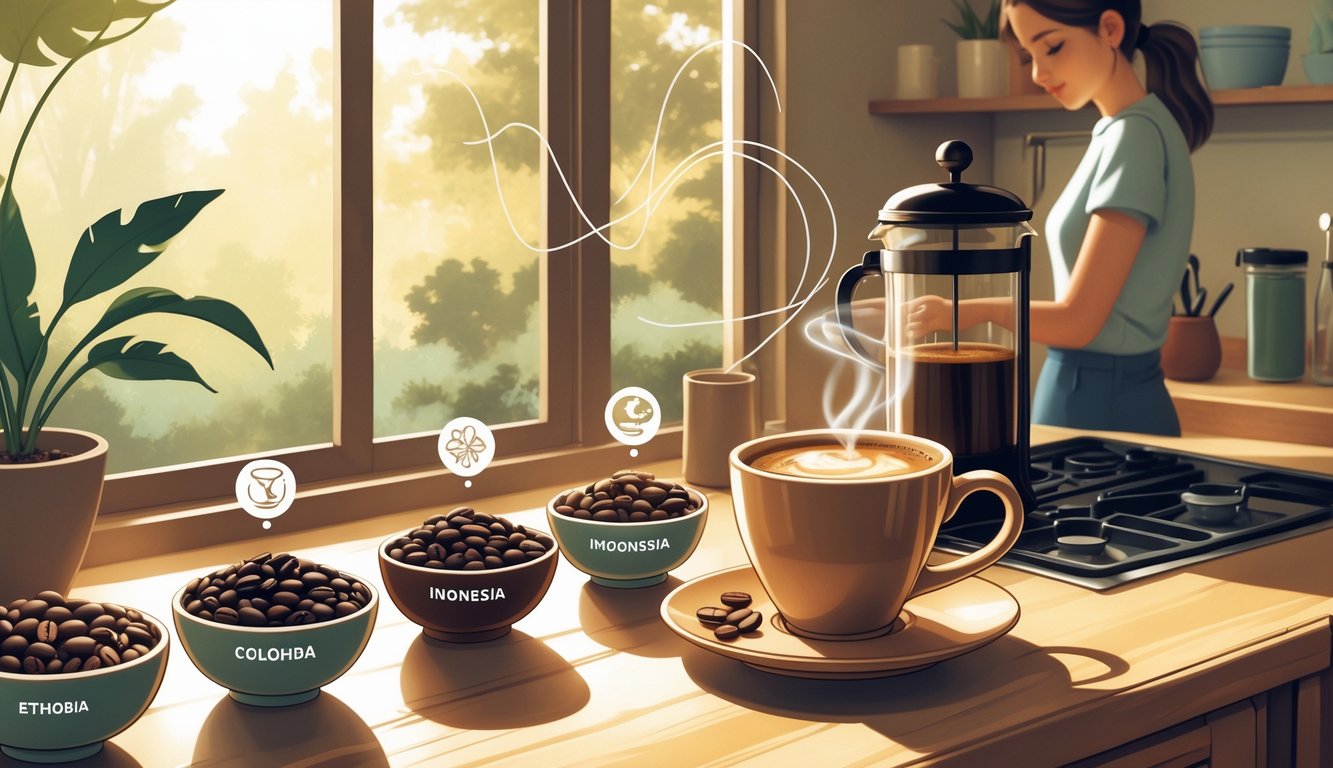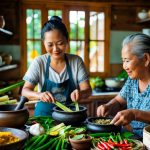
Mindful Mornings: Coffee Culture and Rituals Worldwide
Every morning I’m tearing through cabinets for that bag of single-origin, then five minutes later questioning if adding butter to my coffee was a terrible idea. It’s weird—coffee’s not just caffeine, it’s this whole ritual thing, and sometimes I wonder if the ritual matters more than the drink. Not talking about “self-care” in the Instagram sense, but those oddly specific routines people invent—multi-step, sometimes ridiculous, but they stick.
Integrating Mindfulness and Yoga with Coffee
So, “balance.” Supposedly, yoga and coffee are the ultimate morning combo. I can barely touch my toes, but I keep hearing that if you drink your coffee mindfully, your day transforms. I don’t know—should I meditate with a mug of Colombia Supremo, or will the acidity ruin my zen? In Japan’s kissaten cafés, people treat siphon brewing like a slow-motion science experiment, every gesture deliberate. There was this 2022 Kyoto study—tiny sample size, but whatever—that said people who combined breathwork with their pour-over felt more productive by noon. Not sure if it’s placebo or science.
And the gear obsession? Some of my friends swear their Hario V60 is more important than their yoga mat. It’s chaos. One person journals between sips, another sets “intentions” while the moka pot gurgles, I just end up doomscrolling. My “mindfulness” is realizing I left my mug somewhere and now it’s cold.
Unique Coffee Rituals Across Cultures
Honestly, people could write whole dissertations on coffee rituals and never agree on anything. Ethiopia’s Buna ceremony? It eats up half your morning—roast, grind, brew, then there’s the social part, and it’s way more involved than dumping grounds in a French press. In Turkey, they tell fortunes with the leftover grounds, and the whole service is strict: tiny cups, sugar pre-set, no cream, and it’s all ancient hospitality etiquette. Here’s a detailed breakdown if you’re curious.
Japanese siphon coffee is a whole performance—precision, glassware, patience, like a caffeinated tea ceremony. Every country’s got its thing: Parisian cafés are all about slow talk, Swedish fika is about silence and cake. Starbucks can try to copy that, but honestly, it never feels the same. If someone tells you morning coffee rituals are universal, they’re lying. It’s all tangled up in history, habit, and whoever made the coffee first.
Pairing Coffee Beans With Breakfast Foods
Here’s the thing that drives me nuts: every time I think I’ve figured out what coffee goes with breakfast, the rules change. Regional quirks just bulldoze through my plans—one cup’s got acidity that bites, another’s so mellow it’s boring, and sometimes the “fruit notes” taste like chewing on a pencil. I dunked cinnamon rolls in three coffees once and the Sumatran roast just killed the flavor. Why did I even try?
Best Coffees to Pair With Pastries
You’d think coffee and pastries are a no-brainer, but then you grab a bright Kenyan AA and suddenly your croissant tastes like orange juice. Chef Thomas Keller apparently told the New York Times he’d never drink acidic coffee with a buttery Danish, and now I get it. If I want something safe, I go for a dark Sumatra—cocoa, earthy, it smooths things out and doesn’t fight with sweet stuff like donuts.
Medium-roast Colombian? That caramel-fruit balance lets blueberry muffins actually taste like blueberries. But all those “ultimate pairing hacks” online ignore the bitterness problem. Even a Vienna roast can clash with raisin pastries. If someone tells you a light Ethiopian Yirgacheffe is “perfect” with a cinnamon roll, ask them if cinnamon makes their teeth hurt, because it gets harsh fast. I mean, who wants their pain au chocolat to taste like lemon rind?
How Regional Beans Complement Breakfast
Ever take a bite of sausage and then sip a Guatemalan Huehuetenango, and just… regret it immediately? Those apple-grape flavors don’t play nice with eggs—at least not for me. Dr. Marta Liu from the Specialty Coffee Association said pairing isn’t about boldness, it’s about matching or gently contrasting texture. Creamy scrambled eggs? They need a mellow, nutty Brazilian coffee, not something acidic. I keep a bag of Brazil beans around just to avoid surprises.
Pancakes are a mess. Maple syrup turns dark roasts bitter, but a floral Ethiopian light roast with pancakes? Suddenly it’s like eating a weird fruit salad, but my neighbor loves it. Sometimes I sip a washed Costa Rican with bacon and think, “yeah, this works,” but then the brightness hits the salt and it’s like drinking tonic water after fries. Buttery foods and earthy coffees get along, but anyone claiming there’s a “universal” match is bluffing. The experts say it’s all about the details, but honestly, it feels like guesswork.
Sustainability and Quality in Regional Coffee
Every bag of beans now screams at me—Rainforest Alliance frog, “artisan roasted,” and suddenly I’m questioning my whole routine because of a sticker. Certifications and roast dates everywhere, and I’m still not sure why I care so much about a logo at 6am.
The Importance of Rainforest Alliance and Fair Trade
I’ll admit it: I’ve bought coffee just because of the Rainforest Alliance frog. Regretted the price, but whatever. Turns out, those certifications—Rainforest Alliance, Fair Trade—actually mean something for small farms, not just marketing. Academic research backs this up: stricter environmental rules, better pay for workers, more than just a feel-good label (see Costa Rica’s sustainability push).
But here’s the catch: big exporters sometimes mix beans, so tracking one “certified” bean through the process is basically impossible. Plus, the cost of certification can push out smaller farms that are actually doing things right, just without the paperwork. I see lists of certified origins, then specialty roasters with no stickers but better coffee. None of it’s simple.
Choosing High-Quality Roasted Beans
Chasing specialty coffee is a rabbit hole. I once spent thirty minutes reading roast dates and left the shop without milk. The best beans—Ethiopia Yirgacheffe, Colombia Huila, whatever—are great, but if they’re old, they’re trash. Freshness beats fancy labels every time. Smell the bag, check the “roasted on” date—don’t just trust the name.
Specialty roasters love to list “citrus zest” or “red plum” in their notes, but let’s be honest, who’s tasting that at 6:45am? I read a ScienceDirect paper that said bean mixing or bad storage kills those flavors anyway. So, sure, region matters, but if you don’t care about freshness and storage, good luck—your cup’s as flat as gas station coffee.



